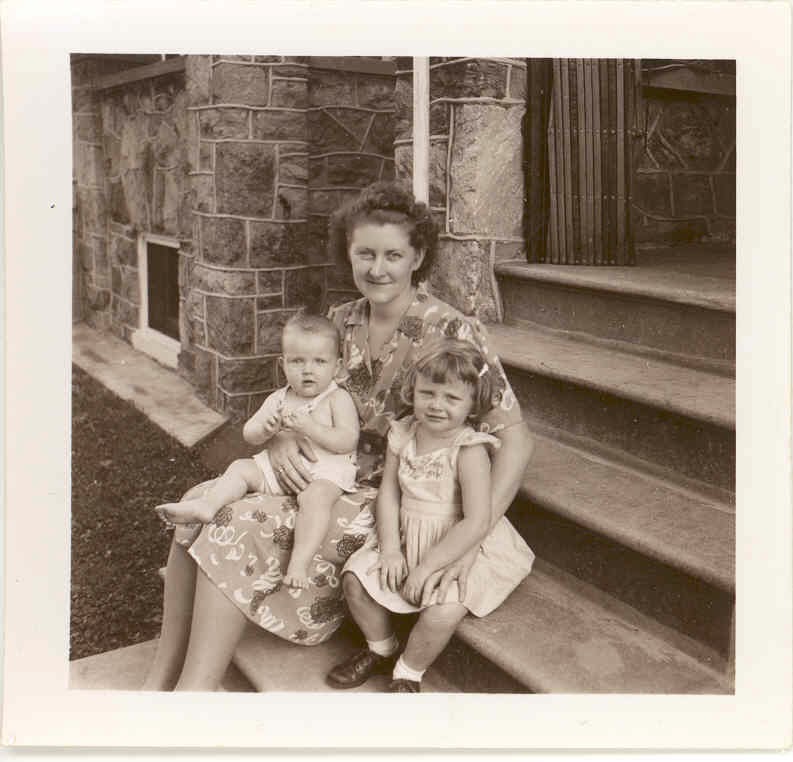Often in the "Letters to Mary" that Bill wrote when he was overseas in "The War" he mentioned Bernard and Jane. Bernard was his youngest brother and the last of the five children of Phoebe Emma Biggs Garner and Souil Wade Garner. Though he was of age when "The War" broke out, he was born on 20 September 1923, Bernard never served in "The War" due to medical issues. Bernard had been physically challenged since childhood by a leg which he almost lost at the the age of 15 months. He was just starting to walk well when he fell to the floor one day and cried. His mother picked him up, consoled him, and set him on his feet again - but once more he fell to the floor. His mother then noticed that he felt feverish and summoned the family doctor, Dr. Walter Grempler. After examining Bernard, he immediately called in for consultation a surgeon, Dr. Johnson. Bernard's illness was diagnosed as streptococcus infection of his right knee, which required immediate surgery if his leg, and possibly his life, were to be saved. He was rushed to Union Memorial Hospital for care and was hospitalized many weeks by this illness. They were able to save the leg, but he never had full use of it.
He graduated from Baltimore Polytechnic School and after trying several lines of work, he finally embarked on his own business of interior decorating, specializing in custom made draperies.
He married Margaret Jane Durding, the only child of Benjamin Francis Durding and his wife, Anna Legg.
Bernard and Jane produced two children, Bernard Shelbourne Garner, Jr born 13 January 1943 and Patricia Lee Garner born 13 May 1950. Bernard and Jane raised their children to adulthood and then divorced.
Bernard remarried and his second wife Vivian R. Garner predeceased him.
Bernard, in his later years, lived with his daughter, Patricia, until he became ill and passed away on March 23, 2011 at the age of 87. He was laid to rest in the Garner family burial plot, next to his brother Souil William Garner, Druid Ridge Cemetery, Baltimore, Md. He was the last of the five children born to Souil Wade Garner and Phoebe Emma Biggs Garner, to pass away, and so with the passing of Bernard, ended the "Greatest Generation" of the Garner family.
He graduated from Baltimore Polytechnic School and after trying several lines of work, he finally embarked on his own business of interior decorating, specializing in custom made draperies.
He married Margaret Jane Durding, the only child of Benjamin Francis Durding and his wife, Anna Legg.
 |
| Left to right: Bernard Shelbourne Garner Jr, Jane Durding Garner, Bernard Shelbourne Garner Sr, Patricia Lee Garner. |
Bernard remarried and his second wife Vivian R. Garner predeceased him.
Bernard, in his later years, lived with his daughter, Patricia, until he became ill and passed away on March 23, 2011 at the age of 87. He was laid to rest in the Garner family burial plot, next to his brother Souil William Garner, Druid Ridge Cemetery, Baltimore, Md. He was the last of the five children born to Souil Wade Garner and Phoebe Emma Biggs Garner, to pass away, and so with the passing of Bernard, ended the "Greatest Generation" of the Garner family.
 | |||
| Mary Willis Garner, Souil William Garner, Bernard Shelbourne Garner, and Wilbur Cecil Garner (Joseph Randolph Garner Absent) |







































